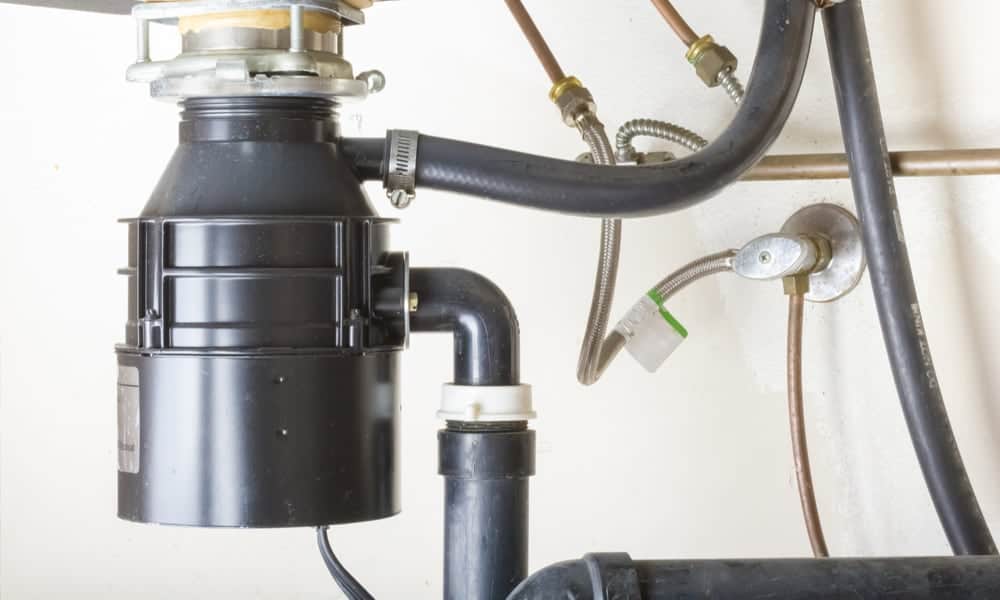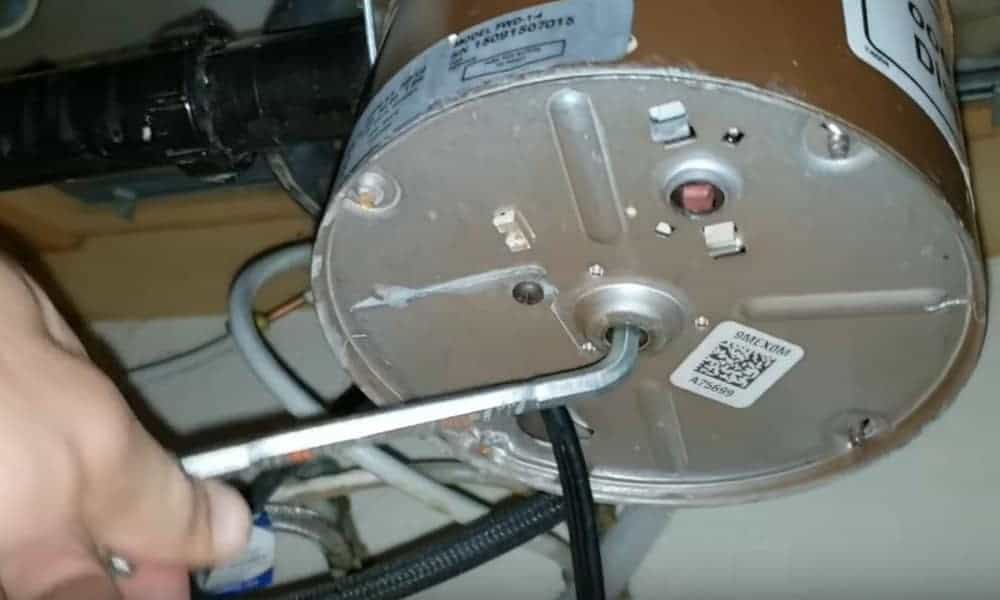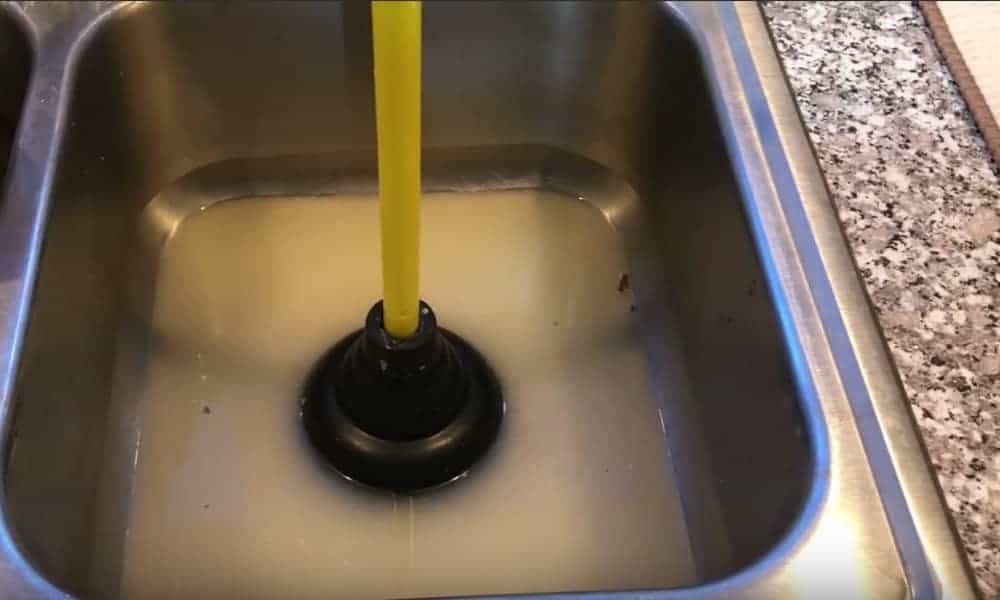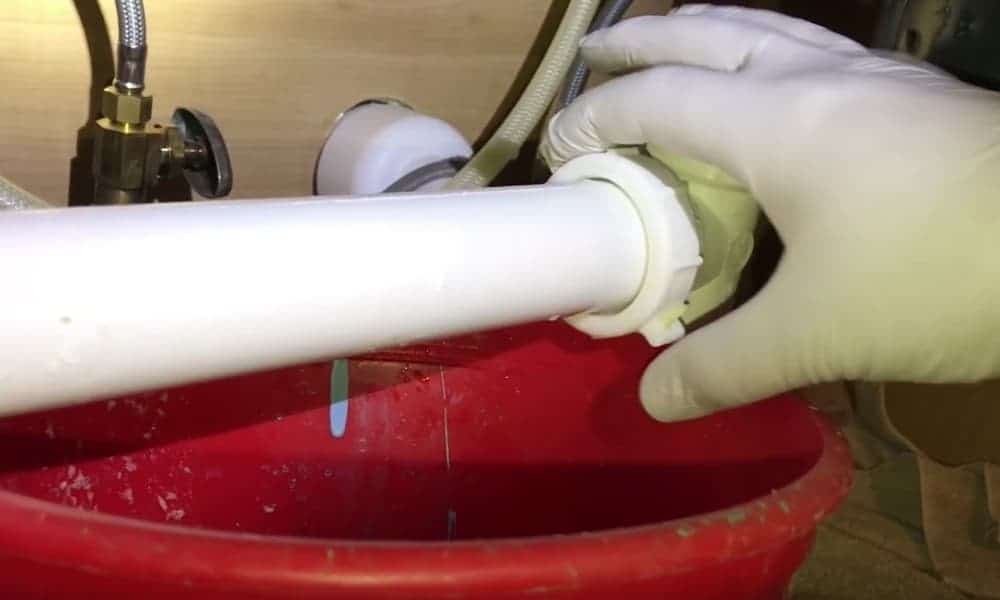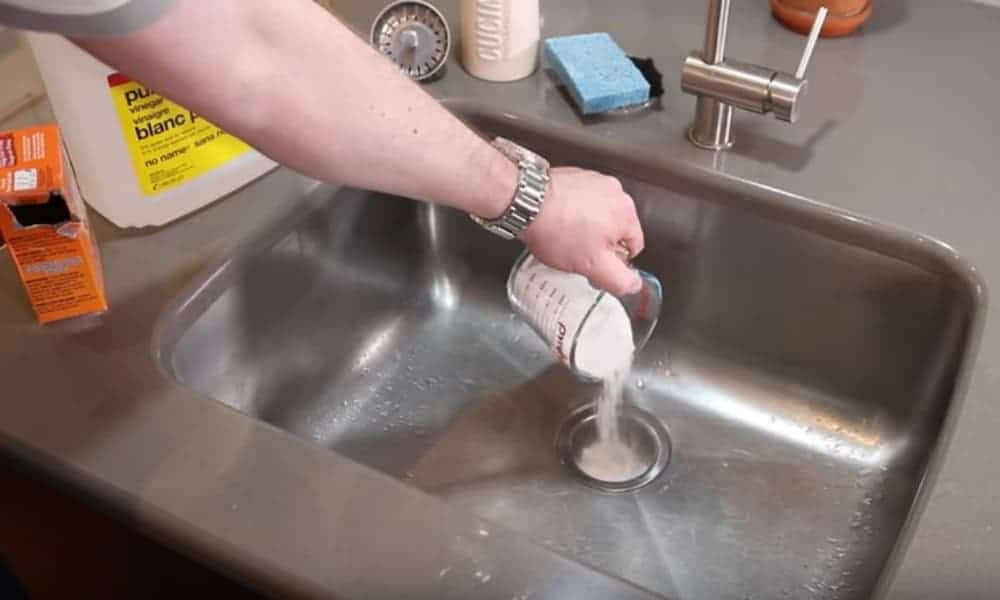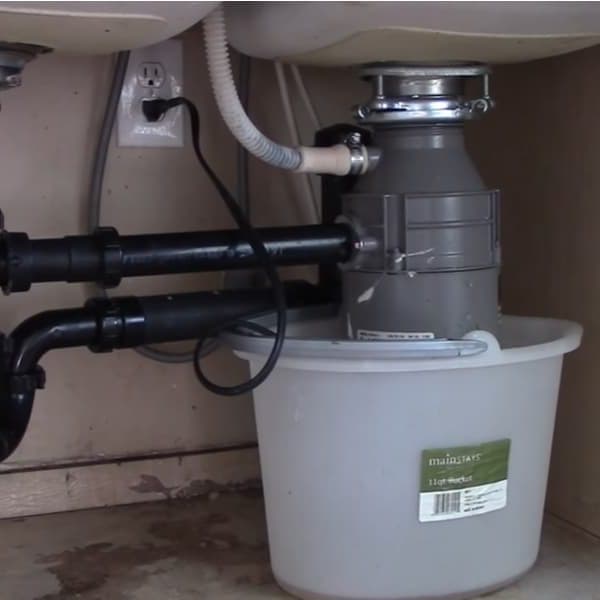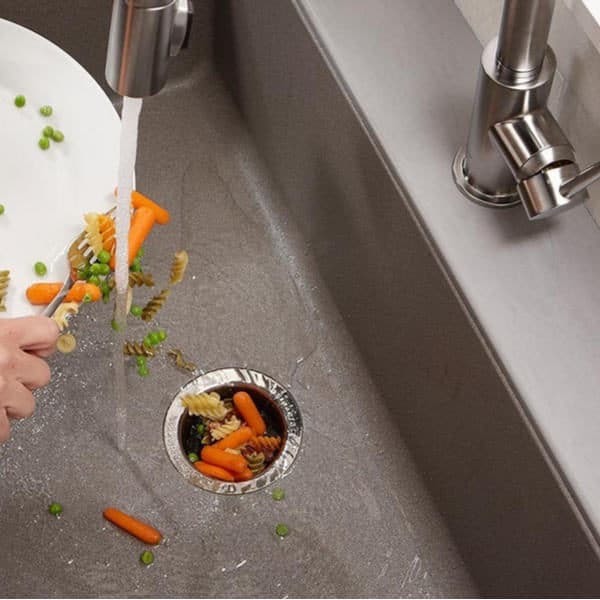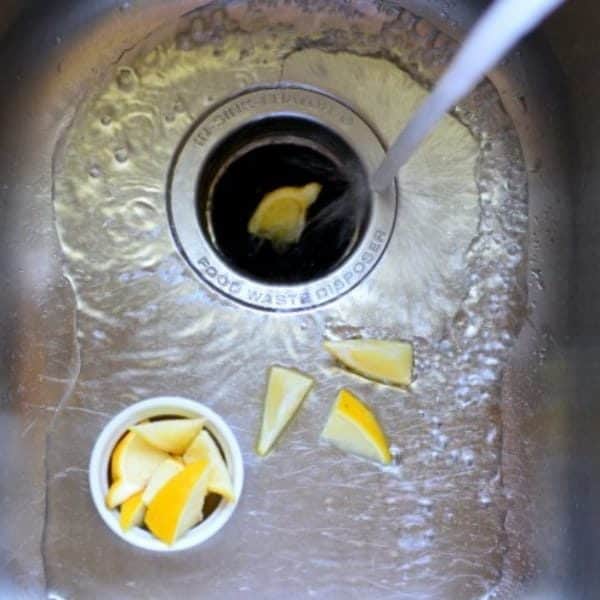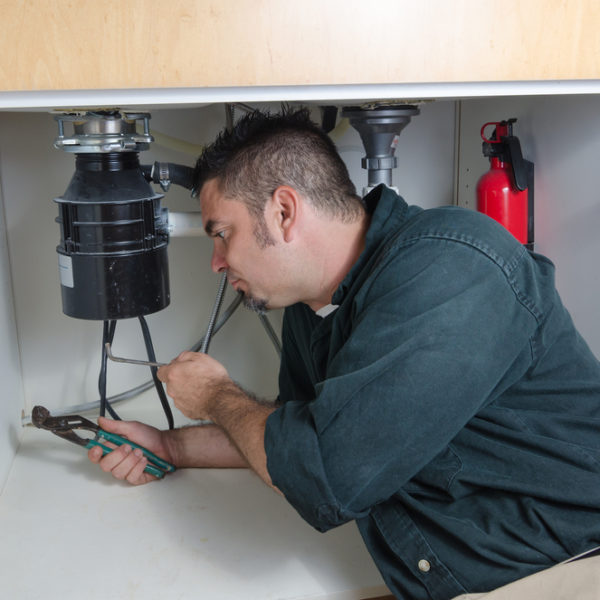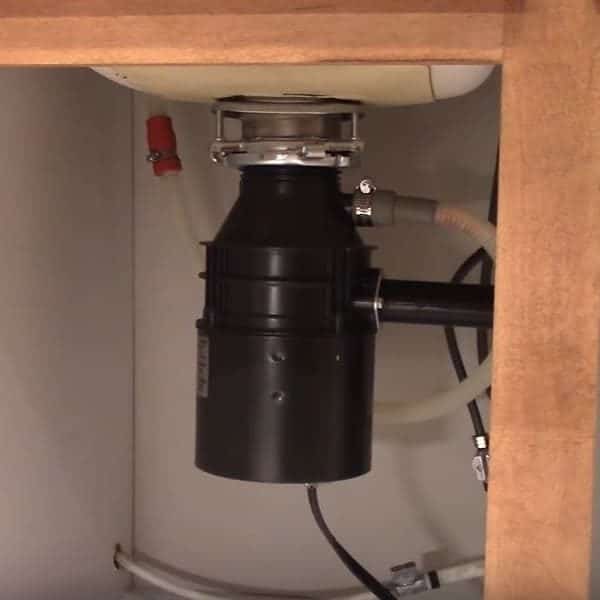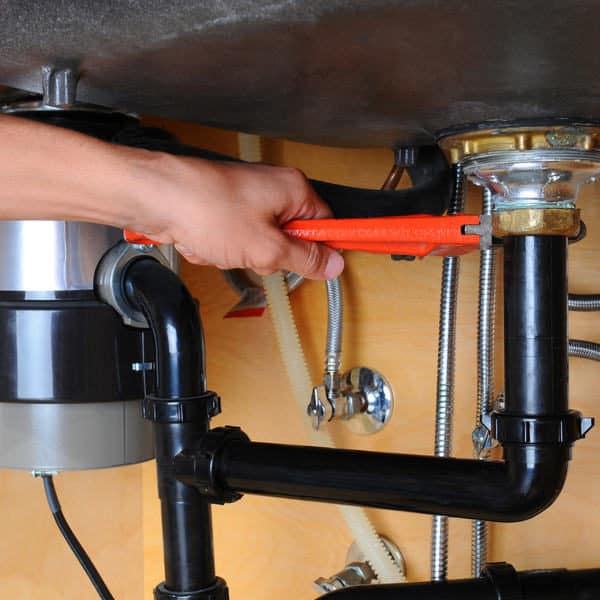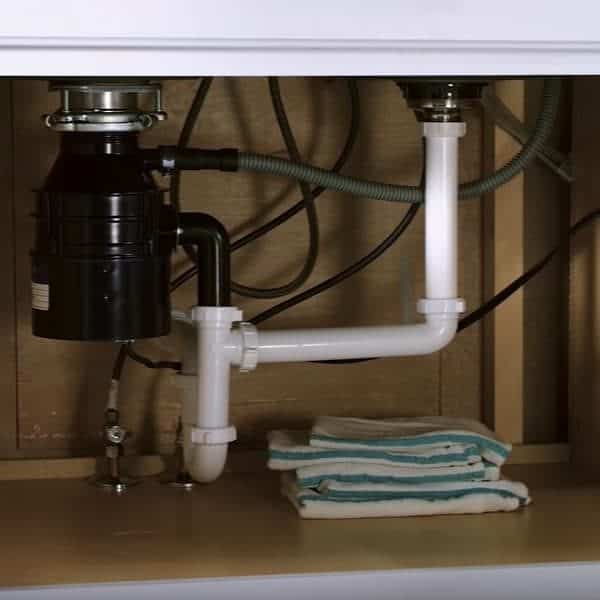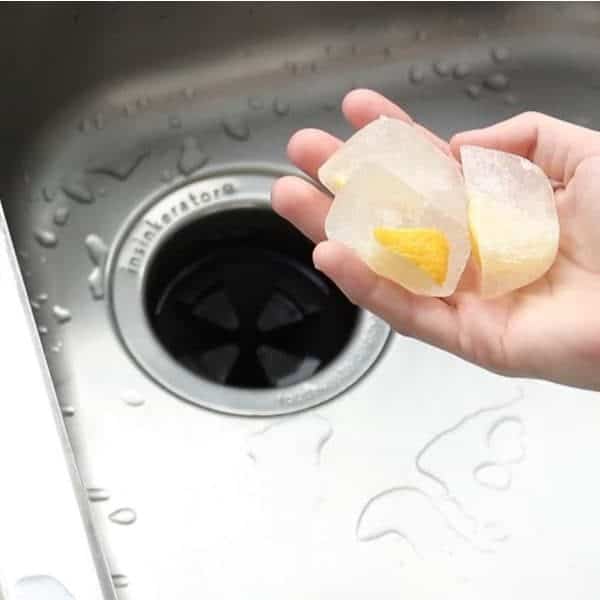One thing about using your kitchen sink is that little crumbs of food remnants pass through with ease, but larger pieces can clog the garbage disposal. When this happens, the first question that comes to mind is how to unclog a garbage disposal.
Also, the first method that comes to your mind is to use the chemical drain cleaner to clear the way. But that’s not a good option if you don’t want to damage plastic and metals parts of the garbage disposal.
Instead of exposing your pipes to corrosion by chemical drainers, we have put together the best way to unclog a garbage disposal. But before carrying this out, ensure you study the user manual so that you can do it effectively.
How to Unclog a Garbage Disposal
1. Stop Every Work with the Disposal
Do not do any repairs when the disposal is still working so that you don’t injure yourself or increase spoilage.
Before you put anything inside the drain, make sure there is no power running through it again. Check under the sink and ensure you unplug it. This process works for a newer model, but for older ones, you can switch it off through a fuse box.
2. Find out the Cause of the Clog
First, you have to flash a light down through the drain to know the cause of the blockade. This process will allow you to know the right tools you will need to unclog your disposal. Flush with water if it’s food particles, but if it’s not, don’t do it.
At this point, you may need to call a plumber if you need an advanced technique to remove the object. That’s if the item is of high value, for example, your expensive wedding ring. But if it’s not, you can do it yourself after you have studied the manual.
Most times, it clogs because of accumulated food particles. If this is the case, then water might not work. Hence, you will need a plunger to plunge the sink.
3. Loosen the Clogged Materials Manually
In some cases, the best option on how to unclog your garbage disposal is to loosen the clogged debris manually. You can achieve this by turning the blades manually in a slow manner to loosen up the materials. Moreover, if you turn the blades manually, there is a clearer view of the clogged particles and easier access to it.
Do not use your hands to turn the blades, use an Allen wrench instead. Insert your Allen wrench at the bottom of the disposal where the manual operator is positioned. Find where the clog is and turn the blades slowly to loosen up the debris.
You’ll have to visit the manual frequently to carry out this activity. Ensure your garbage disposal is not turned on before starting this activity. Furthermore, tighten the drain parts, so dirt doesn’t flow back into the dishwasher cabinet if it is connected.
4. Use Pliers or Long-Handled Tongs to Unclog
You can make use of these tools by sticking its end through the blades of the disposal. Use the pliers or tongs to remove the pile of hard food substances. These may be debris from the veggies, peels from banana, or little chunks of fat from meat.
Always use the implements, don’t use bare hands to do anything inside a garbage disposal. You could get a deep cut from the blades of the disposal. So why not stick with the tools for the smaller objects and then use the plunge for the larger particles.
Not only food particles can clog your disposal, so if you notice something that’s not food, be careful when pulling. Remember not to use your hands, or better still call a plumber if it’s becoming too hard.
5. Plunge the Garbage Disposal to Unclog
After you extract the loose materials, switch on your garbage disposal. Allow it to run for a few minutes to check if it has unclogged, or you should use a plunger to remove the clog.
When it’s running, listen for a humming sound, it signifies that the blades are still stuck and the disposal clogged. Ensure that water is running when testing to grease the blades and wash off any sticky thing ‘on it. After that, turn off the garbage disposal and make sure it’s properly turned off.
Fill the sink with water afterward to enable the plunger to suck up some and stick to the sink. Insert the plunger appropriately and plunge. The plunger will generate a strong sucking power that will clear off all existing garbage at your disposal, thus clearing the pipe.
Plunge again until there is nothing left in the pipeline. This process will allow the water in your sink to run through a clear pathway with no clogs.
Wait a little while like 10-15 minutes before running the disposal motor so that it can cool down a bit. This is important as overheating of the disposal, from running it severally, can spoil the motor and won’t clear any garbage.
After the said time, switch on the garbage disposal and run some water down the drain to ensure that you have a clear pathway. Test the garbage disposal motor to ensure it works perfectly. Remember to unclamp the drain line afterward. Your garbage disposal is good to go.
6. Check the S-trap Pipes
It can be frustrating when you have tried all the steps above without results. This clogging might be due to excess sludge and grease in the trap channels. Coffee grounds and grease that have accumulated as well will not allow other materials to drain effectively.
This stage of the blockade will require that you disengage the pipe attached to the garbage disposal. This is an advanced stage in the process of how to unclog a garbage disposal. These pipes look like an S or P, and so are called S or P trap pipes.
You will find it connected to the trap arms and well-positioned to your disposal unit. S-trap pipes are always behind your wall cabinet, so you have to prepare well to avoid much mess. Attach a bucket to the end of the pipe before disassembling to prevent water from pouring on the ground.
You might want to drain all the water in your sink before disengaging the pipes. Therefore, it will minimize the spillage that will occur when you open the end of the pipe. Then loosen the nut that connects the trap arm to the waste tee, the trap arm is like a faucet.
From the back of your cabinet, extends the waste tee to the pipe above the trap arm. It connects the arm to the disposal, so you have to loosen the nuts to disassemble the pipes. Once this is done, detach the P-trap pipes.
7. Clear up The Trap Pipes
Clearing out the trap is the final step on how to unclog your garbage disposal. You will notice that it’s filled with debris and other heavy materials like ground coffee and cereal pellets. If your trap has a cleanout plug, you can pull to clear out the dirt without removing the pipe.
But if your disposal does not have, you’ll have to detach the trap. Position your container in such a way that it will catch all the debris coming from the trap. You can use a cloth hanger to pull out debris that doesn’t fall before rinsing the trap with warm water.
Position a bucket under the trap when you are rinsing your trap directly from the sink. This is to prevent dirty water from flowing back down through the pipes and water spilling all over.
Once you have cleared the pipes, carefully assemble it with other parts such that you don’t over tighten or crack any of them. Be more careful with the plastic ones as they easily break or damage; add a little tact to it.
After this stage, everything will flow perfectly
Ways to Keep Your Garbage Disposal in Good Shape
Your kitchen sink is an important part of your kitchen and the major link to your garbage disposal. So if you’re bothered with how to unclog your garbage disposal, you might want to keep it in good shape. You can do this by :
Avoid Sending Big and Unbreakable Objects Down
You should avoid putting food items such as plastic, bones, and metals down your garbage disposal drain. This kind of object can spoil the blades, which can only breakdown small food particles perfectly. Putting these items can ruin the blades and cause your disposal to malfunction.
Squeeze some Lemon Cleans
Occasionally, you need to squash in one or two lemons down your disposal to help decongest its drainage path. The fruit will serve as a natural cleanser and keep away the odor from your garbage disposal. Endeavor to flush your disposal with lemon fluid once every two weeks to keep blades running correctly.
With your blades firing well and kitchen sink with a pleasant smell, you won’t need professional help soon or ever.
Give Your Disposal a Cold Water Flush
To keep your garbage disposal in sound condition, you need to give it a cold water flush occasionally. Also, you should flush it with water like 30 seconds after use. This half-minute cleaning will enable the blades to run perfectly without clogging.
Furthermore, the water will help flush down any food remnants sticking up to the pipes or blades and ensure you unclog your garbage disposal.
Wash With Baking Soda and Vinegar
This combination comes in handy when you are thinking of how to unclog your garbage disposal with baking soda. The mixtures will melt the grease. Makes sure the disposal and breaker are both detached before you start this activity.
Pour ½ cup of baking soda first into the garbage disposal then follow up with another ¼ cup of vinegar over the stack of garbage. Watch out for foam because the action reacts strongly. This mixture works exactly like the harsher drain cleaners but is gentler on the plastic parts of the disposal.
Fix back the breaker with the garbage disposal and run hot water through it for a further few minutes. At this point, you need to use the reset button to start it up if it works thumbs up. But if it does not, a plumber is just a call away.
Final Word
The trouble of how to unclog your garbage disposal when it’s filled with the debris of a severe one. When clogged, it could make your kitchen sink very messy. We have highlighted how to unclog your garbage disposal with standing water and baking soda. It is easier by sticking with the steps to avoid clogging; you should not overlook steps like
- Clean your garbage disposal occasionally with lemon fluid to give it a smell of freshness
- Avoid sending large objects like metal, bones and waterproof items down the disposal drain
- Also, try to unclog your garbage disposal using baking soda, it’s milder than the drain cleaning chemicals
- Use pliers or long-handled tongs to unclog
- Plunge the garbage disposal to unclog
If you have further questions, you can ask is in the comment section. We’ll be delighted to help.
